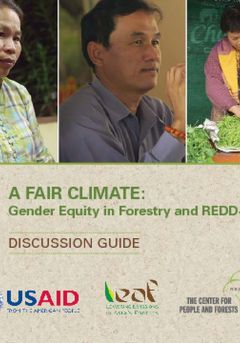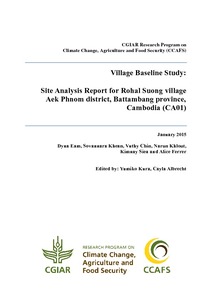A Fair Climate: Gender Equity in Forestry and REDD+ Discussion Guide
To accompany the training video (available here) produced by USAID-funded programs GREEN Mekong and USAID LEAF Asia, a discussion guide is now available for trainers and grassroots facilitators to delve deeper into the gender aspect of social equity in terms of forest-based climate change initiatives, including REDD+. The questions in the guide will help facilitate discussions concerning forest management practices and forest governance in the local and institutional contexts.





